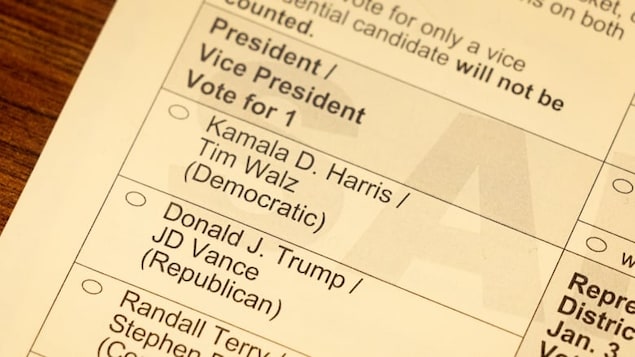Counting the Votes: A Delicate US Election Process
As Americans head to the polls, the complexities of vote counting in a highly divided nation could mean delays. The role of swing states and the phenomenon of voting 'mirages' are in focus.
Published November 06, 2024 - 00:11am

Image recovered from ici.radio-canada.ca
In the complex landscape of the United States elections, the absence of a centralized federal election commission adds numerous layers to the vote tallying process. Each state is left to navigate its own election laws, creating a patchwork system that those anxiously awaiting results must decipher. This variability becomes especially critical in the seven swing states deemed pivotal for the outcome of the presidential contest between Donald Trump and Kamala Harris, where diverse counting methods and timelines intensify the stakes.
One notable aspect of the current electoral process is the potential for 'vote mirages.' This term describes a scenario where initial vote counts may misleadingly suggest a significant lead for one candidate, which can diminish as counting progresses. A phenomenon witnessed in the 2020 election, Trump prematurely declared victory given early favorable results, which were later overturned as more ballots were processed. Pennsylvania, a crucial swing state, witnessed this when the initial votes cast at polling stations gave Trump an advantage that dissipated as mail-in ballots, predominantly favoring Democrats, were counted, leading to Biden's eventual win.
The current election witnesses similar concerns of voting 'mirages.' While Georgia is expected to report most of its votes on election night, states like Pennsylvania advise patience due to their inability to begin processing mail-in ballots until Election Day itself. Similarly, critical states like Michigan, Wisconsin, and Arizona exhibit a diverse range of timelines and methodologies for counting ballots, driven by each state's legislative framework.
A divergence in voting methods across the political spectrum also contributes to voting 'mirages.' Democrats are more likely to use mail-in ballots, while Republican voters show preference for in-person voting on Election Day. This dichotomy could exacerbate initial misrepresentations in vote counts. For example, in Georgia, mail-in votes and early in-person votes are tabulated early, potentially showing a Democratic lead that diminishes after Election Day ballots are counted. Amid this, Trump and his allies continue to cast doubt over the integrity of mail-in voting, a tactic reminiscent of the 2020 elections.
These scenarios are further complicated by challenges in particular jurisdictions. For instance, Maricopa County in Arizona, a crucial region with a substantial voter base, has already indicated that a complete count could span up to nearly two weeks, partly due to a lengthy ballot comprising numerous additional measures. This delay is indicative of the greater voting pattern complexities, where a mixture of paper ballots, ballot-marking devices, and different counts for early arrivals versus Election Day ballots persist, adding layers of procedure alongside awaiting postmarked yet unreceived mail-in ballots in states like Nevada.
Beyond the quirks of varied state laws and recount conditions, the overarching tension resides in a deeply polarized political atmosphere. Automatic and candidate-requested recounts add to the complexity and delays, especially in tight races. Furthermore, confidence in the electoral process itself remains precarious. With a considerable portion of Americans skeptical about election fairness and accuracy, any delays or discrepancies in declaring results might serve as fodder for contestation or litigation.
The stakes of this election extend beyond the presidency. Control of Congress hangs in the balance, with several swing states key not only in determining electoral college votes but also in deciding the fate of congressional seats. This scenario prolongs uncertainty, especially when critical electoral outcomes are contingent on an accurate and transparent count amidst a high volume of mail-in votes and Election Day voicing from a broad electorate.
Therefore, understanding the intricacies of each state's electoral rules and preparing for potential mirages and delays in results emerge as essential for navigating the emotions of election night. While victory margins and recount procedures will considerably influence final results, a keen eye on the dynamic landscape of the American electoral process remains paramount.







